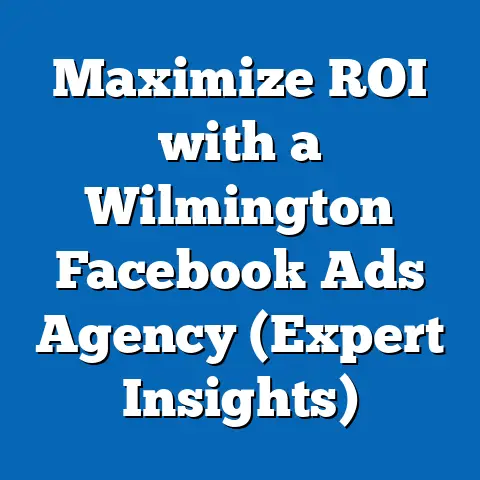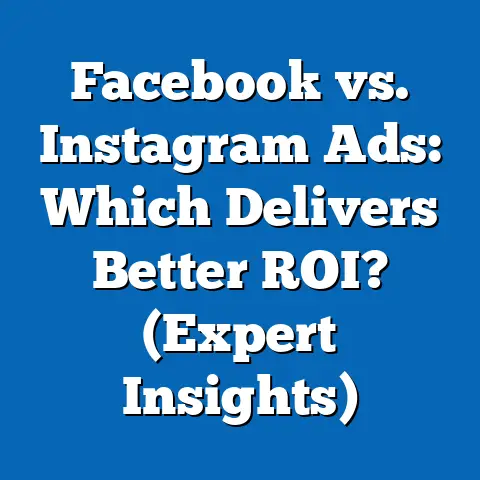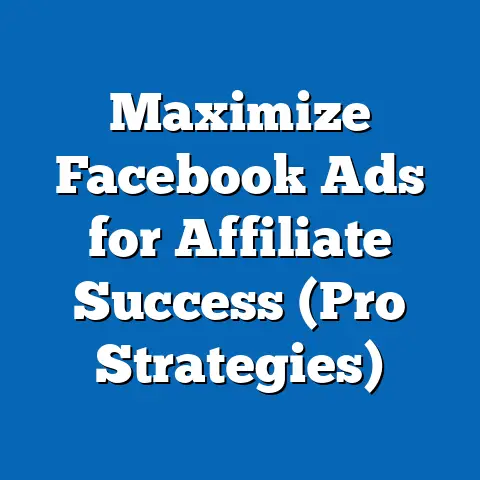Resolve Facebook Ad Pausing Issues (Expert Troubleshooting Tips)
Just like any fulfilling hobby, mastering Facebook advertising requires patience, persistence, and a willingness to troubleshoot. Think of it like gardening. You wouldn’t expect a prize-winning rose to bloom without tending to the soil, pruning the stems, and occasionally battling pests. Similarly, a successful Facebook ad campaign needs constant monitoring, tweaking, and problem-solving. Sometimes, that means figuring out why your ads keep pausing.
Understanding Facebook Ad Pausing
When a Facebook ad is paused, it simply means it’s no longer being shown to your target audience. This can be a temporary setback or a symptom of a larger problem. The implications can be significant: a stalled campaign means lost leads, decreased website traffic, and ultimately, a hit to your bottom line.
There are several common reasons why Facebook ads might be paused. These can range from straightforward issues like budget constraints – you simply ran out of money – to more complex issues like policy violations, where Facebook flags your ad for not adhering to their advertising guidelines. Low engagement, meaning your ad isn’t resonating with your audience, can also trigger a pause as Facebook aims to optimize ad delivery.
It’s crucial to distinguish between a temporary pause, which might be intentional (you manually paused the ad to make changes) or automated (Facebook paused it because your budget was depleted), and a more serious underlying issue that needs deeper troubleshooting. Ignoring a problem and simply restarting the ad without addressing the root cause will likely lead to the ad pausing again. This guide is here to help you identify and resolve those root causes.
Key Takeaway: Understand the difference between temporary and problematic pausing. Identify the reason behind the pause to prevent recurrence.
Common Causes of Ad Pausing
Now, let’s explore the most frequent culprits behind those frustrating ad pauses. Understanding these causes is the first step towards finding a solution.
Budget and Bidding Issues
Budget and bidding are the lifeblood of your Facebook ad campaigns. If these aren’t set up correctly, your ads are almost guaranteed to pause unexpectedly. Facebook offers two primary budget options: daily budgets and lifetime budgets.
- Daily Budgets: This is the average amount you’re willing to spend per day. Facebook might spend slightly more or less on any given day, but over time, the average will align with your daily budget. If your campaign performance leads Facebook to believe it can’t deliver results within your daily budget, or if the algorithm predicts it will exceed it significantly, it might pause your ad.
- Lifetime Budgets: This is the total amount you’re willing to spend over the entire duration of your campaign. Facebook will optimize your spending to get the best results within that budget. However, if your bidding strategy is too aggressive (e.g., targeting a highly competitive audience with a high cost-per-click bid) or your campaign duration is too short, Facebook might exhaust your lifetime budget prematurely, leading to a pause.
Bidding strategies also play a critical role. If you’re using manual bidding and set your bid too low, your ads might not win enough auctions to be shown consistently, leading to a pause due to lack of delivery. Conversely, if you’re using automated bidding (like “Lowest Cost” or “Target Cost”), Facebook will try to optimize your bids to achieve your desired outcome. However, if the algorithm struggles to find opportunities within your budget, it might pause your ads to avoid overspending or delivering poor results.
Personal Story: I once worked with a client who had a fantastic product but constantly struggled with ad pauses. It turned out they were using a daily budget that was far too low for their target audience size. They were effectively starving their campaign! Once we increased the daily budget and implemented a more strategic bidding approach, their ads ran smoothly and their sales skyrocketed.
Key Takeaway: Ensure your budget aligns with your targeting and campaign duration. Review your bidding strategy to ensure it’s appropriate for your goals and audience.
Ad Account Status
Your ad account is the central hub for all your Facebook advertising activities. If there are issues with your ad account itself, such as payment failures or policy violations, it can bring your entire operation to a halt, causing all your ads to pause.
- Payment Failures: Facebook requires a valid payment method to run ads. If your credit card expires, is declined, or doesn’t have sufficient funds, Facebook will pause your ads until the issue is resolved. It’s crucial to keep your payment information up-to-date and monitor your account for any payment notifications.
- Policy Violations: Facebook has strict advertising policies designed to protect users and maintain a positive platform experience. If your ads violate these policies (e.g., promoting prohibited content, making misleading claims, using deceptive practices), Facebook will disapprove your ads and may even suspend your ad account, leading to ad pauses.
- Account Restrictions: In severe cases of policy violations or suspicious activity, Facebook might restrict your ad account entirely. This means you won’t be able to create or run any ads until the restriction is lifted.
Checking your ad account health is paramount. You can do this by navigating to the “Account Quality” section in Facebook Ads Manager. This dashboard provides an overview of your account status, any policy violations, and any restrictions that might be in place.
Key Takeaway: Regularly check your ad account status in the “Account Quality” section. Address any payment issues or policy violations promptly to avoid ad pauses.
Target Audience Changes
Your target audience is the group of people you want to reach with your ads. Changes in your targeting criteria can significantly impact ad delivery and potentially lead to pauses.
- Audience Overlap: If you’re running multiple ad sets targeting similar audiences, there might be overlap. This means the same people are being targeted by multiple ads, which can lead to ad fatigue and decreased performance. Facebook’s algorithm might pause ads in overlapping ad sets to avoid showing the same ads to the same people repeatedly.
- Audience Exclusion: You can exclude certain audiences from your targeting to refine your reach. However, if you accidentally exclude a large portion of your potential audience or create overly restrictive exclusions, it can limit your ad delivery and potentially lead to pauses.
- Audience Size: If your target audience is too small, Facebook might struggle to find enough people to show your ads to, especially if you have a high budget or aggressive bidding strategy. This can result in ad pauses due to lack of delivery.
Example: Imagine you’re selling handmade jewelry. You initially target women aged 25-45 interested in fashion and crafts. However, you then create another ad set targeting women aged 25-45 interested in sustainable fashion. The overlap between these audiences is significant, and Facebook might pause one of the ad sets to avoid showing the same ads to the same people.
Key Takeaway: Regularly review your audience targeting to avoid overlap or overly restrictive exclusions. Ensure your target audience is large enough to support your campaign goals.
Ad Quality and Relevance
Facebook prioritizes showing users ads that are relevant and engaging. Your ad’s quality and relevance scores directly impact its performance and can influence whether it’s paused.
- Ad Quality Score: This score reflects Facebook’s assessment of your ad’s overall quality, based on factors like its visual appeal, clarity, and credibility. Low-quality ads are less likely to be shown and may be paused.
- Relevance Score: This score measures how relevant your ad is to your target audience. It’s based on positive and negative feedback, such as likes, comments, shares, and reports. A low relevance score indicates that your ad isn’t resonating with your audience, which can lead to decreased performance and potential pausing.
- Low Engagement Rates: Even if your ad has a decent quality and relevance score, consistently low engagement rates (e.g., low click-through rates, low conversion rates) can signal to Facebook that your ad isn’t performing well. This can trigger a pause as Facebook tries to optimize ad delivery and show users more engaging content.
Actionable Tip: Use A/B testing to experiment with different ad creatives, headlines, and copy. Analyze the results to identify what resonates best with your audience and improve your ad quality and relevance scores.
Key Takeaway: Monitor your ad quality and relevance scores. Focus on creating high-quality, engaging ads that are highly relevant to your target audience.
Expert Troubleshooting Steps
Now that we’ve covered the common causes of ad pausing, let’s move on to the actionable steps you can take to troubleshoot and resolve these issues.
Step 1: Check the Ad Account Status
As mentioned earlier, your ad account status is the first place to check when your ads are pausing unexpectedly. Here’s how to access it:
- Navigate to Facebook Ads Manager: Log in to your Facebook account and go to Ads Manager (https://www.facebook.com/adsmanager).
- Access Account Quality: In the left-hand navigation menu, click on “All Tools” and then select “Account Quality.” (You might need to scroll down to find it).
- Review Account Overview: The Account Quality dashboard provides an overview of your account status, including any policy violations, payment issues, or restrictions.
- Address Any Issues: If you see any red flags, such as disapproved ads or payment failures, take immediate action to resolve them. This might involve appealing a policy violation, updating your payment information, or contacting Facebook support.
Pro Tip: Regularly check your Account Quality dashboard, even if you’re not experiencing any ad pausing issues. This proactive approach can help you identify and address potential problems before they escalate.
Key Takeaway: Regularly monitor the “Account Quality” section in Ads Manager and address any flagged issues promptly.
Step 2: Review Budget and Bidding Settings
Next, carefully review your budget and bidding settings to ensure they’re aligned with your campaign goals and target audience.
- Navigate to the Ad Set Level: In Ads Manager, select the campaign and ad set that’s experiencing ad pausing issues.
- Review Budget: Check whether you’re using a daily or lifetime budget. Ensure the budget amount is sufficient for your target audience size and campaign duration.
- Adjust Budget (If Necessary): If your budget is too low, consider increasing it. Start with a small increase (e.g., 10-20%) and monitor the performance.
- Review Bidding Strategy: Check your bidding strategy. Are you using manual bidding or automated bidding? Is your bid amount appropriate for your target audience and desired outcome?
- Adjust Bidding Strategy (If Necessary): If you’re using manual bidding and your ads aren’t being shown, consider increasing your bid. If you’re using automated bidding, experiment with different optimization goals (e.g., conversions, link clicks) to see what works best.
Actionable Tip: Use Facebook’s “Estimated Daily Results” feature to get an estimate of the reach and results you can expect based on your budget and targeting. This can help you determine whether your budget is sufficient for your goals.
Key Takeaway: Ensure your budget and bidding settings are aligned with your campaign goals and target audience. Adjust them as needed based on performance data.
Step 3: Analyze Audience Targeting
Carefully analyze your audience targeting to avoid overlap, overly restrictive exclusions, or audiences that are too small.
- Navigate to the Ad Set Level: In Ads Manager, select the ad set that’s experiencing ad pausing issues.
- Review Audience Targeting: Check your targeting criteria, including demographics, interests, behaviors, and custom audiences.
- Identify Potential Issues: Look for potential issues like audience overlap, overly restrictive exclusions, or audiences that are too small.
- Refine Audience Targeting (If Necessary): If you identify any issues, refine your audience targeting. This might involve excluding overlapping audiences, expanding your targeting criteria, or creating new custom audiences.
Pro Tip: Use Facebook’s “Audience Insights” tool to gain a deeper understanding of your target audience, including their demographics, interests, behaviors, and online activity. This can help you refine your targeting and improve your ad performance. You can find audience insights under “All Tools” in the Ads Manager.
Key Takeaway: Regularly review and refine your audience targeting to ensure it’s optimized for reach and relevance.
Step 4: Evaluate Ad Quality and Relevance
Evaluate your ad quality and relevance scores and take steps to improve them if necessary.
- Navigate to the Ad Level: In Ads Manager, select the ad that’s experiencing ad pausing issues.
- Check Ad Quality and Relevance Scores: In the “Columns” dropdown menu, select “Performance and Relevance.” This will display your ad’s quality ranking, engagement rate ranking, and conversion rate ranking.
- Analyze Feedback: Pay attention to the feedback you’re receiving on your ad, such as likes, comments, shares, and reports. This feedback can provide valuable insights into what’s resonating with your audience and what’s not.
- Improve Ad Quality and Relevance (If Necessary): If your ad quality or relevance scores are low, take steps to improve them. This might involve:
- Improving your ad creative (e.g., using higher-quality images or videos)
- Writing more compelling ad copy
- Refining your targeting to reach a more relevant audience
- A/B testing different ad variations to see what performs best
- Improving your ad creative (e.g., using higher-quality images or videos)
- Writing more compelling ad copy
- Refining your targeting to reach a more relevant audience
- A/B testing different ad variations to see what performs best
Personal Story: I once had a client whose ads were consistently getting low relevance scores. After analyzing the feedback, we realized that the ad copy was misleading and didn’t accurately reflect the product being advertised. We rewrote the ad copy to be more transparent and accurate, and the relevance scores immediately improved, leading to a significant increase in conversions.
Key Takeaway: Monitor your ad quality and relevance scores. Focus on creating high-quality, engaging ads that are highly relevant to your target audience.
Step 5: Monitor Campaign Performance
Regularly monitor your campaign performance and make adjustments as needed to prevent future ad pauses.
- Set Up Reporting: Create custom reports in Ads Manager to track key metrics like reach, impressions, click-through rate, conversion rate, and cost-per-conversion.
- Schedule Regular Reviews: Schedule regular reviews of your campaign performance (e.g., daily, weekly) to identify any trends or issues.
- Make Adjustments: Based on your performance data, make adjustments to your campaign as needed. This might involve:
- Increasing or decreasing your budget
- Adjusting your bidding strategy
- Refining your audience targeting
- Improving your ad creative
- Pausing or deleting underperforming ads
- Increasing or decreasing your budget
- Adjusting your bidding strategy
- Refining your audience targeting
- Improving your ad creative
- Pausing or deleting underperforming ads
Actionable Tip: Use Facebook’s “Automated Rules” feature to set up rules that automatically adjust your campaign based on performance data. For example, you can set up a rule to automatically increase your bid if your cost-per-conversion falls below a certain threshold.
Key Takeaway: Regularly monitor your campaign performance and make adjustments as needed to optimize your results and prevent future ad pauses.
Advanced Troubleshooting Techniques
If you’ve tried the troubleshooting steps above and you’re still experiencing ad pausing issues, here are some advanced techniques you can try.
Utilizing Facebook Support
Don’t hesitate to reach out to Facebook support for assistance.
- Access Facebook Support: In Ads Manager, click on the question mark icon in the top right corner and select “Help Center.”
- Search for Answers: Use the Help Center to search for answers to your questions.
- Contact Support (If Necessary): If you can’t find the answers you need, contact Facebook support directly. You might need to provide detailed information about your ad account, campaign, and the issues you’re experiencing.
Pro Tip: Be patient and persistent when working with Facebook support. It might take some time to get a response, but they’re usually willing to help if you provide them with the necessary information.
Key Takeaway: Don’t be afraid to reach out to Facebook support for assistance. Be patient and provide them with detailed information about your issue.
Leveraging Third-party Tools
Consider using third-party analytics and management tools to help identify and resolve ad pausing issues more efficiently. Some popular options include:
- Hootsuite: A social media management platform that allows you to schedule posts, monitor engagement, and analyze performance across multiple platforms.
- Buffer: Similar to Hootsuite, Buffer offers scheduling, analytics, and engagement tools for social media.
- AdEspresso: A Facebook ad management platform that provides A/B testing, automation, and reporting features.
- Klaviyo: An email marketing platform that integrates with Facebook Ads to help you personalize your campaigns and track conversions.
These tools can provide valuable insights into your campaign performance, identify potential issues, and automate tasks like budget optimization and A/B testing.
Key Takeaway: Explore third-party tools to enhance your Facebook ad management and troubleshooting capabilities.
Community and Expert Forums
Engage with online communities and expert forums for shared experiences and solutions regarding ad management challenges.
- Facebook Groups: There are numerous Facebook groups dedicated to Facebook advertising. These groups can be a valuable resource for asking questions, sharing tips, and learning from other advertisers.
- Online Forums: Platforms like Reddit and Quora have dedicated forums for discussing digital marketing and Facebook advertising.
- Industry Blogs: Follow industry blogs and publications that cover Facebook advertising to stay up-to-date on the latest trends and best practices.
Learning from the experiences of other advertisers can provide valuable insights and help you troubleshoot ad pausing issues more effectively.
Key Takeaway: Engage with online communities and expert forums to learn from other advertisers and stay up-to-date on the latest trends.
Conclusion
Just like mastering a new hobby, successfully navigating the world of Facebook advertising requires dedication and a willingness to learn. Ad pausing issues can be frustrating, but they’re often a sign that something needs to be adjusted or improved. By understanding the common causes of ad pausing and following the troubleshooting steps outlined in this guide, you can keep your campaigns running smoothly and achieve your advertising goals.
Remember, patience and persistence are key. Don’t get discouraged if you encounter setbacks. Embrace the challenges, learn from your mistakes, and keep experimenting until you find what works best for your business. And just like a well-tended garden, your Facebook ad campaigns will flourish, yielding a bountiful harvest of leads, customers, and revenue.






